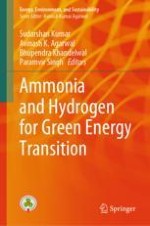2024 | OriginalPaper | Buchkapitel
15. Hydrogen-Fueled Spark Ignition Engines: Understanding NOx Formation and Mitigation Through Engine Design Innovations
verfasst von : Parampreet Singh, Sridhar Sahoo, Neeraj Kumbhakarna, Paramvir Singh
Erschienen in: Ammonia and Hydrogen for Green Energy Transition
Verlag: Springer Nature Singapore
Aktivieren Sie unsere intelligente Suche, um passende Fachinhalte oder Patente zu finden.
Wählen Sie Textabschnitte aus um mit Künstlicher Intelligenz passenden Patente zu finden. powered by
Markieren Sie Textabschnitte, um KI-gestützt weitere passende Inhalte zu finden. powered by
